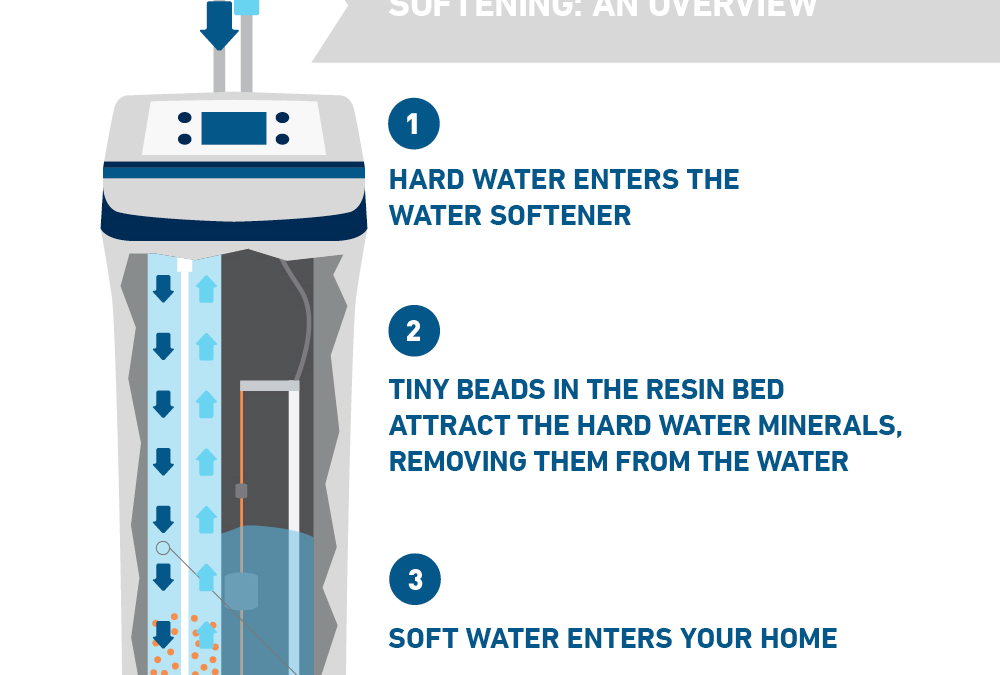You can avoid many health risks by installing one. Water that is soft and free from impurities is ideal for drinking, cooking, and washing. However, consider installing a reverse osmosis system after your softener if you’re averse to water taste. It’s an excellent way to purify water before using it for anything else.
What are the signs that you need a water softener?
Hard water is a common problem in many areas, and the best way to deal with it is to install a water softener. Water with high levels of calcium and magnesium can cause many plumbing problems, including limescale buildup in your pipes. Adding it to your home will prevent clogs and restore the natural life of your appliances and clothing.
Your water is probably hard, but you might not realize it. A simple test to check the softness of your water can be done by filling up a glass. If there are no bubbles, your water is likely hard. Test your water with a home testing kit if you observe any of these symptoms. If you need to know your water hardness level, you can buy a water softener test kit online and perform your test at home. Once installed, you’ll see how much it affects your water quality.
The minerals in hard water can damage your plumbing. Mineral deposits in your pipes make the pumps work harder, causing further plumbing problems and decreased water pressure. As you can imagine, hard water can ruin your clothes. But you can make your clothes last longer by softening your water. Here are a few more signs that you should install a water softener. The first sign that your water is hard is that you see the scale on your glassware, fixtures, and coffee pot.
What happens if you don’t have a water softener?
One of the most common problems with hard water is limescale. While this can be scrubbed off hard-to-reach areas, it can still cause multiple health problems. Additionally, soft water can pick up other minerals in pipes, such as lead. Even if you install a water softener in your home, you must set it properly. Too-high levels can waste water and money. Ideally, it would be best if you ran a softener at a level close to your home’s water hardness. Moreover, if you have a water softener installed in your home, it’s best to wait to run the unit for a few weeks after installing copper plumbing. This will reduce the risk of copper consumption, which is a major cause of corrosion.
Water softeners remove hard minerals from water through an ion exchange process. These minerals can be exchanged with sodium ions. If you have a water softener, your water will be soft enough for you to work. Hard water can cause white streaks on your sink and showerhead and cause scale buildup on your appliances.
What is soft water?
Hard water is composed of calcium carbonate, roughly 4% of the earth’s crust. This mineral is the most common measuring tool for water hardness because it can erode household appliances, reduce efficiency, and create unpleasant smells. Furthermore, hard water can leave a buildup on skin and hair, resulting in dryness and brittleness. Water is considered soft when all minerals are removed. Water softeners remove these minerals through ionization.
However, drinking soft water is not advisable for people with heart disease or a low-sodium diet, as the sodium content in soft water increases after the process. Studies have shown that areas with the highest levels of minerals have the lowest rates of cardiovascular disease. Fortunately, water-softening technologies such as reverse osmosis and distillation can combat sodium in soft water. Hard water is generally the better choice for drinking and cooking, but it has its downsides.
Magnesium and calcium are present in high concentrations in hard water. The minerals make it difficult to lather soap and functional appliances. Even worse, hard water causes grayscale deposits in plumbing fixtures, limiting the effectiveness of cleaning products. Despite these drawbacks, most US homes have hard water, and it’s a common misconception that soft water is normal. Instead, bottled water contains calcium chloride, which is harmful to your skin.
How do home water softeners work?
One of the simplest solutions to your hard water problem is installing a water softener. These appliances soften water in a tank by adding salt. The salt dissolves as the water passes through the tank, reducing the soap film and detergent curds. However, before you make a decision, consider a few things. How do home water softeners work? Will explain the basic principles of soft water systems.
If your water is hard, you may feel rough and dirty. Soft water is cleaner, but the opposite is true. Soft water will also feel slippery on your skin and smell fresher. Water softeners are ion exchange systems that need sodium to work effectively. Magnesium and calcium ions carry double positive charges, while sodium carries a single charge. If you are worried about your water quality, you can schedule a water test with a laboratory.
Regeneration is the process that happens after the resins and media beads have absorbed the calcium and magnesium in the water. This process is called regeneration. Regeneration is done by rinsing the resin in the softener with the salt solution from the brine tank. Once this is complete, the water softener is ready to clean hard water. It is important to note that the regeneration process consists of four steps. The salt-based water softener regenerates every 24 hours, so it’s important to know which works best for your home.
What is a water-softening system?
A water softening system is a system that uses a process called ion exchange to remove calcium and magnesium ions from water. The sodium ions in the brine replace the calcium and magnesium ions in hard water. To keep the water soft, the water must be regularly cleaned to prevent the system from becoming clogged. The regeneration process involves adding a small amount of salt to the water. This salt replenishes the softening agent, which is then used to maintain the system’s effectiveness.
The regeneration process can take up to 105 minutes and use about 100 gallons of water. Most water softeners come with a salt tank that helps with regeneration. The brine tank holds a concentrated solution of salt that helps the resin bead beads regain their positive charges. Added salt is usually manually added, but a computer can be programmed to add the salt only when necessary. If the system runs out of salt, it will trigger regeneration.
Using a water softener is an excellent way to protect your plumbing from damage caused by hard water. The process removes calcium and magnesium ions from water, resulting in softer water that’s safer for your plumbing and home. In addition, soft water saves money in the long run by reducing the amount of soap you use and prolonging the lifespan of your plumbing system. There are many different types of water softening systems, but the most common is based on reverse osmosis and ion exchange resin. However, there are other approaches, such as precipitation or nanofiltration.
Why is soft water not suitable for drinking?
Soft water is not recommended for drinking and can even make you sick. Water is the universal solvent, which dissolves nearly everything, including metals. This is particularly bad news for copper and lead in water pipes. Because they are two heavy metals, these elements can leach out of pipes, and lead can be especially hazardous. If you have high blood pressure, your doctor may warn you to avoid softened water.
The mineral cause for hardness in water is calcium. In addition to calcium, sodium is a mineral found in hard water, but it does not have the same health benefits as calcium. Hard water contains magnesium and potassium, healthy minerals in food and supplements. Inorganic minerals can’t be easily absorbed by the body’s cells. However, plants can turn inorganic minerals into organic ones, and you can get those minerals from vegetables. While drinking hard water isn’t good for you, drinking soft water does have some benefits. For example, soft water doesn’t leave a film on the skin. Some people may notice a difference after the first shower.
Softened water is safe for drinking in small amounts. However, it’s recommended for small amounts. Experts suggest drinking a minimum of two liters of water daily is safe. While many think softened water contains more sodium than is healthy for drinking, this isn’t entirely true. It’s only a matter of personal preference, and there’s no reason to feel deprived. And softened water can have an unpleasant taste. Water is classified according to the milligrams per liter (mg/L) of dissolved calcium carbonate:
What works better than a water softener?
There are many benefits of water softeners. Unlike a conventional softener, a water refiner does not add salt. While this may seem a negative attribute, many water softeners add a small amount of sodium to the water they treat. And while some people may not mind this, others may prefer pure, non-softened water.
The traditional water softening process is less effective than ion exchange. It removes minerals only by removing the ions that cause hard water. This process is called ion exchange, and a polymer resin bed removes the salt. Ion exchange attracts oppositely charged ions, and this process softens the water. The result is cleaner water that is healthy for drinking and fixtures. Scale buildup can also affect the energy efficiency of boilers and water heaters.
Salt-based water softeners use a water filter to maintain the ion exchange treatment system in its best form. Salt-based water softeners produce high-quality soft water. However, these systems require frequent salt top-ups and are more expensive than alternatives. Reverse osmosis systems and water distillers can also remove hard water minerals. The best water softener for your home will give you high-quality soft water free of calcium, magnesium, and other contaminants.
Conclusion
Scale can build up inside appliances that use water, such as dishwashers and washing machines, and inside your plumbing system, leading to expensive repairs. Hard water makes soap and laundry detergents less effective and can leave behind a scummy residue that causes your linens and clothing to fade, appear dull or gray, develop a sour smell, and become rough and scratchy. It is generally recommended that you flush your water heater once or twice annually to remove any sediment from the bottom. Water softeners, however, save you much more money. Your water heater may be the source of the greatest savings. Soft water is much more efficient for these appliances, while hard water causes them to be inefficient and increases the temperature of your water heater.
When you have hard water, it does leave soap scum on your skin. After showering in hard water, what you notice is not a sign you’re “squeaky clean,” but that you are covered in a sticky residue. As a result of calcium and magnesium in hard water, soap scum will usually build up on the skin, clogging pores. Hard water has more dissolved minerals than soft water, especially calcium and magnesium. High amounts of calcium and magnesium minerals can also lead to dry skin and brittle hair prone to tangling. You will need water softener salts, but you shouldn’t taste salt in your water.



